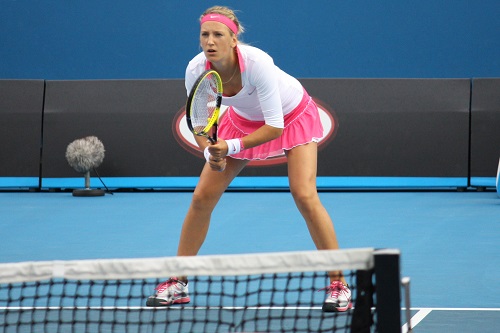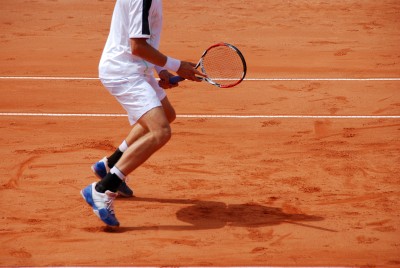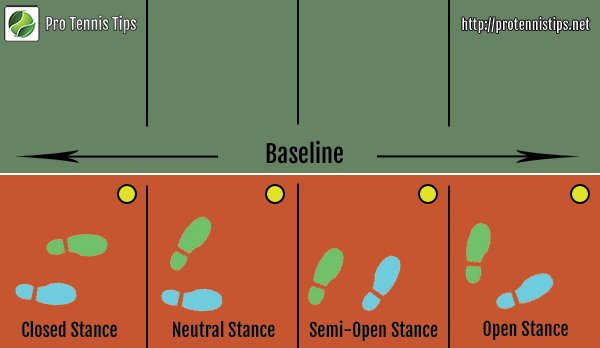How-to: Tennis Footwork
Learning correct tennis footwork will be necessary if you wish to advance your game. Obviously, the game of tennis requires a substantial amount of running around the court, and of course, there are always best practices to keep in mind when doing so. That’s what tennis footwork is for. Moving around the court efficiently, being able to always reach a ball, and how to always stay prepared for the next shot are just a few key aspects we’ll be going over with you today. Let’s go ahead and get started.
How-to: Tennis Footwork
Good tennis footwork affects everything from your timing, balance, power, and consistency. The main focus of proper tennis footwork is to allow you to reach any ball that comes your way, and this will require you to always stay on your toes. Running around the court with just your heels causes you to be a step slower when compared to staying on your toes, and preparation is vital in such a fast-paced sport. It’s the difference between getting to the right position in time or having the ball fly right by you, each and every time.
Being able to get into the right position gives you options, and having options can give you the lead over your opponent by putting you on offense. If you observe a match of tennis, you’ll notice that tennis players are not taking long strides to reach the ball. It’s actually the exact opposite. Light, quick, short steps are key to reaching the ball early, since these precise movements are what allow you to get in just the right position. So, always, always stay on your toes, even if you aren’t a majestic ballet dancer.
Because of this, strong legs are a must in tennis. If your legs happen to be weak, it will affect your entire performance on the court, wasting most of your valuable energy just to get to the ball. If staying on your toes constantly isn’t enough to tone your legs, you can always strengthen your leg muscles by exercising. Some amazing exercises you can use for stronger leg muscles are jogging, lunges, running up incline surfaces, or just typical tennis drills that focuses on the legs. If you routinely exercise, you will notice a vast improvement in your stamina.
Tennis Footwork Techniques
Now, let’s move on to tennis footwork techniques, shall we? In this section, we’ll be talking more about what the best practices for moving around the court are. Some of the things we’ll be talking about include the ready position, the split step, the side shuffle, the cross step, and all four tennis stances.
Ready Position

Before you start approaching a ball, you will most likely start off in the most common position in tennis–the ready position. The ready position requires your legs to be shoulder width apart with your weight equally distributed on both toes and your racquet in front of you held by both hands. Your hips and knees will be slightly bent as well. What this position allows for is a stance that helps you to run in any direction the ball is sent.
The ready position should be used whenever you are anticipating the opponent’s next shot, and should be done when you are at the center of the court.
Split Step

Another tennis footwork technique you can use is called the split step. The split step is a position similar to the ready position, but consists of short hops in the direction of the ball. With the split step, you will be in the ready position stance and perform a short hop just before running. The split step should be done right when your opponent makes contact with the ball, and upon landing on the ground again, you’ll be able to move to where the ball is faster.
If used correctly, the split step will allow for a more explosive way to get to the ball.
Side Shuffle
Once you’ve hit the ball, you might be confused on what to do next. Well, your main priority after you’ve hit the ball is to head back to the center of the court. Of course, the fastest way to get to the center of the court is to run directly there, but this can backfire if your opponent returns the ball in the opposite direction of where you are running. That’s where the side shuffle comes into play. While not the fastest way to recover, the side shuffle is a great recovery method because it allows you to move east or west depending on where the ball is headed, so it is much more safe and useful in a match. To perform a side shuffle, adopt the mindset of a crab and shuffle sideways. The outside foot (furthest away from the center) will move in while the inside foot (closest to the center) moves out toward the center. Your two feet should never touch as you perform the shuffle.
Cross Step
After hitting a shot from far away, you would need a technique to get back to the center as quickly as possible. Fortunately, there’s the tennis footwork technique known as the cross step, or crossover step. In order to perform a cross step, you will cross your leg, one over the other, in the direction you choose to move to. This allows you to cover more ground but will not let you change directions once it’s been done. What’s great about the cross step, however, is that you can quickly switch to the side shuffle method right afterward.
Tennis Stances
A main focus of tennis footwork are the four tennis stances you can take before you hit a ball, and they are used for both forehand and backhand. Each stance is used differently around the court, however, and which stance you should use is highly dependent on how much timing you have. The four tennis stances are:
- Closed stance
- Neutral stance (square stance)
- Open stance
- Semi-open stance

Closed Stance
The closed stance–or classic stance–is a stance where both your feet are turned sideways parallel with the net/baseline. This allows for complete and proper shoulder and body turn, and although it isn’t used for forehand very often, is used mainly for backhand shots. The closed stance is mostly used while at the center of the court, and is best for returning shots. To recover from a closed stance, you will rotate your back foot to the other side as you hit the ball and side shuffle back to the center.
Neutral Stance (Square Stance)
The neutral stance is a stance where your back foot is parallel to the baseline while your front foot is stepping in at a ~90 degree angle. This stance allows you to step into the ball meaning you can add more power to your shot. This stance also gives you the option to approach the net. The way to recover from this stance is by having your back foot align with your front foot and then side shuffle back to the center.
Semi-Open Stance
The semi-open stance is used when you don’t have enough time to perform a neutral stance. Both of your feet will be diagonal relative to the net, at about a ~45 degree angle. This is a very flexible stance, where it allows for both full shoulder rotation and a complete follow through on your shots.
Open Stance
The open stance is a very powerful position that allows you to hit powerful shots. Basically, both of your feet will be facing the net in a straight line. Your upper body will be doing the rotation instead, which creates torque for your swing. This provides additional force on the ball, allows for full shoulder rotation, and helps you to recover more quickly by putting you back in the position where you can side shuffle back to the center.
